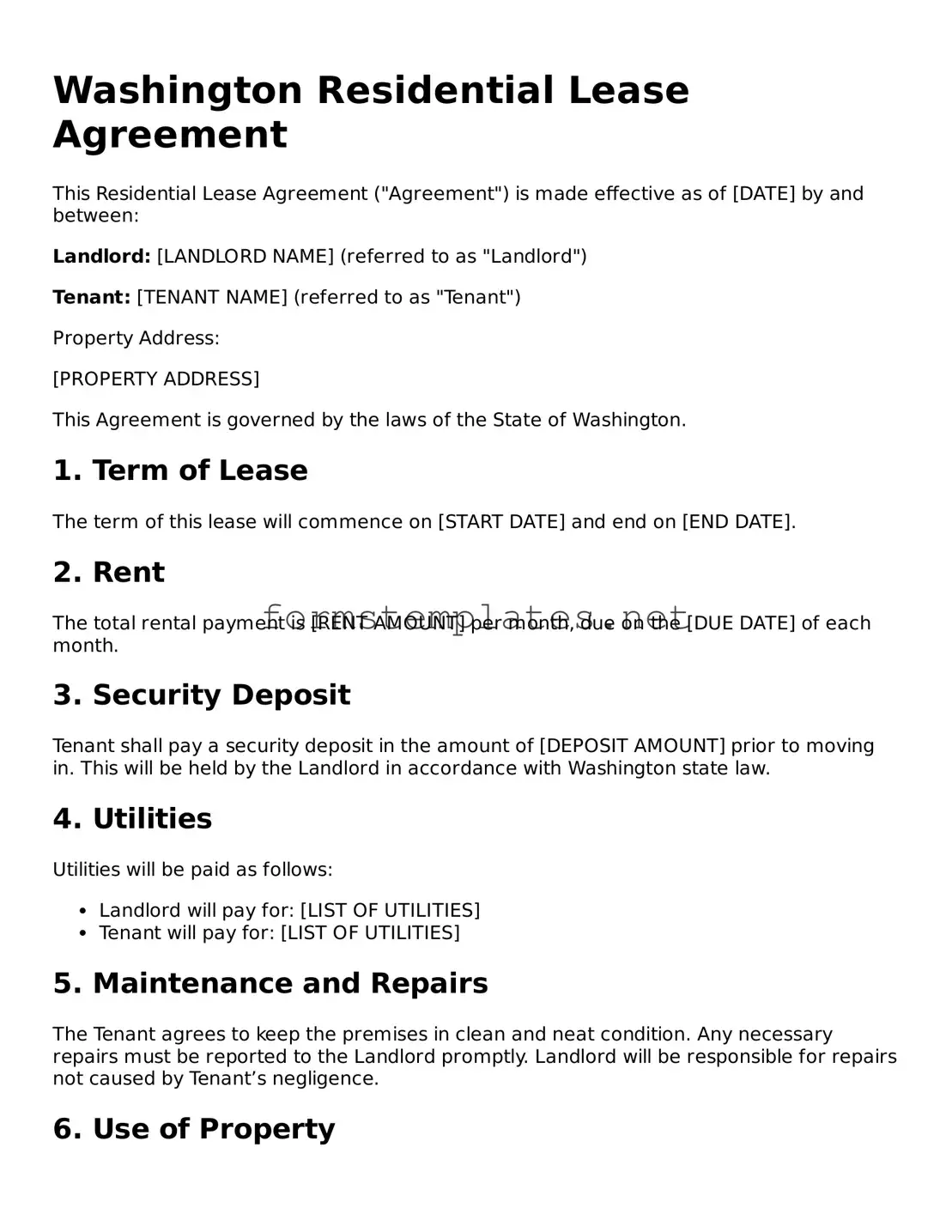Washington Residential Lease Agreement
This Residential Lease Agreement ("Agreement") is made effective as of [DATE] by and between:
Landlord: [LANDLORD NAME] (referred to as "Landlord")
Tenant: [TENANT NAME] (referred to as "Tenant")
Property Address:
[PROPERTY ADDRESS]
This Agreement is governed by the laws of the State of Washington.
1. Term of Lease
The term of this lease will commence on [START DATE] and end on [END DATE].
2. Rent
The total rental payment is [RENT AMOUNT] per month, due on the [DUE DATE] of each month.
3. Security Deposit
Tenant shall pay a security deposit in the amount of [DEPOSIT AMOUNT] prior to moving in. This will be held by the Landlord in accordance with Washington state law.
4. Utilities
Utilities will be paid as follows:
- Landlord will pay for: [LIST OF UTILITIES]
- Tenant will pay for: [LIST OF UTILITIES]
5. Maintenance and Repairs
The Tenant agrees to keep the premises in clean and neat condition. Any necessary repairs must be reported to the Landlord promptly. Landlord will be responsible for repairs not caused by Tenant’s negligence.
6. Use of Property
The Tenant shall use the property solely for residential purposes and no other purpose without the written consent of the Landlord.
7. Pets
Pets are/are not allowed on the premises. If pets are permitted, Tenant agrees to pay a pet deposit of [PET DEPOSIT AMOUNT].
8. Termination
Either party may terminate this Agreement at the end of the lease term by giving written notice at least [NOTICE PERIOD, e.g., 30 days] prior to the end of the lease.
9. Governing Law
This Agreement shall be governed by the laws of the State of Washington.
10. Signatures
IN WITNESS WHEREOF, the parties have executed this Residential Lease Agreement as of the date first above written.
______________________________
Landlord Signature
Date: ______________
______________________________
Tenant Signature
Date: ______________
